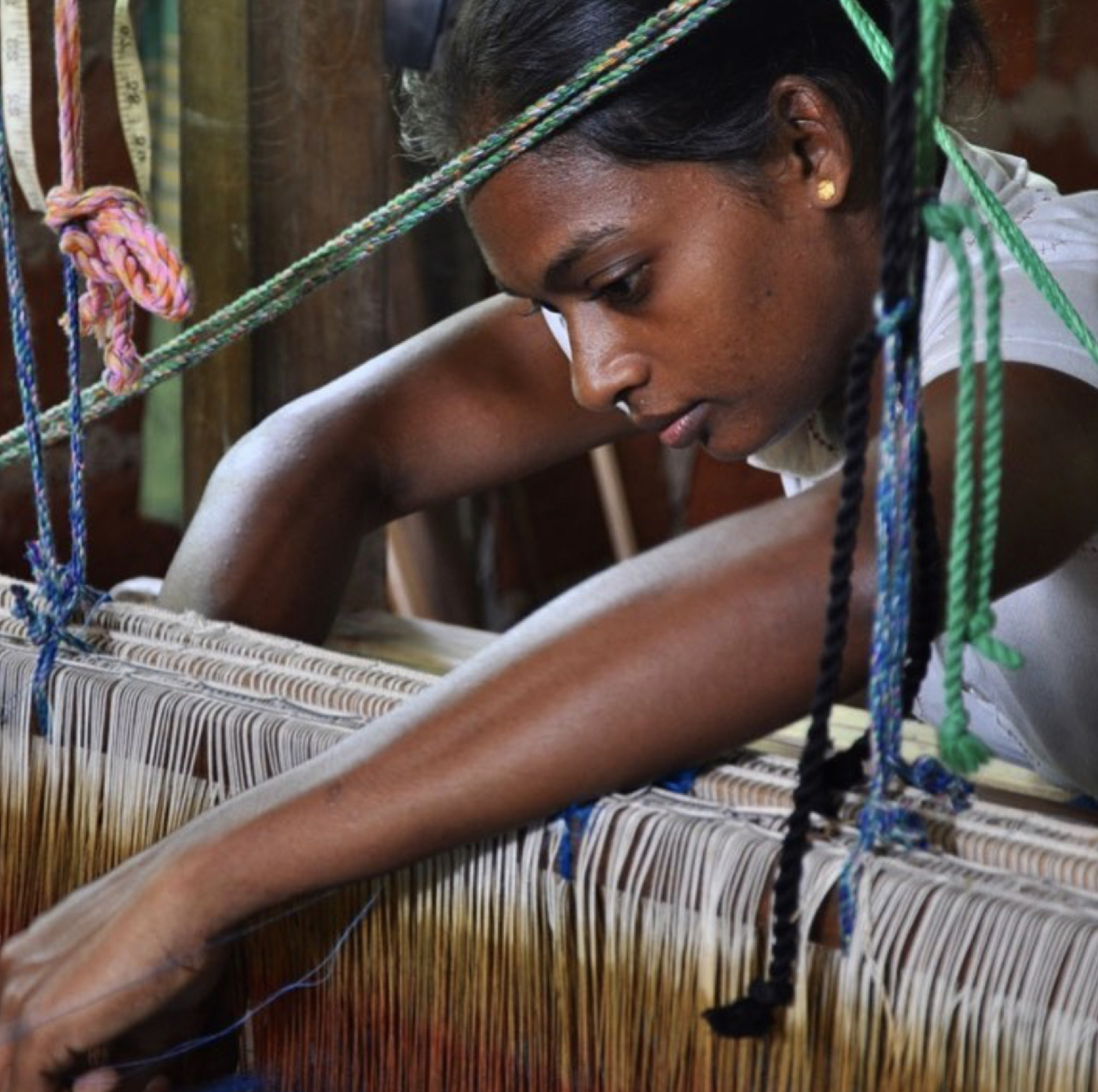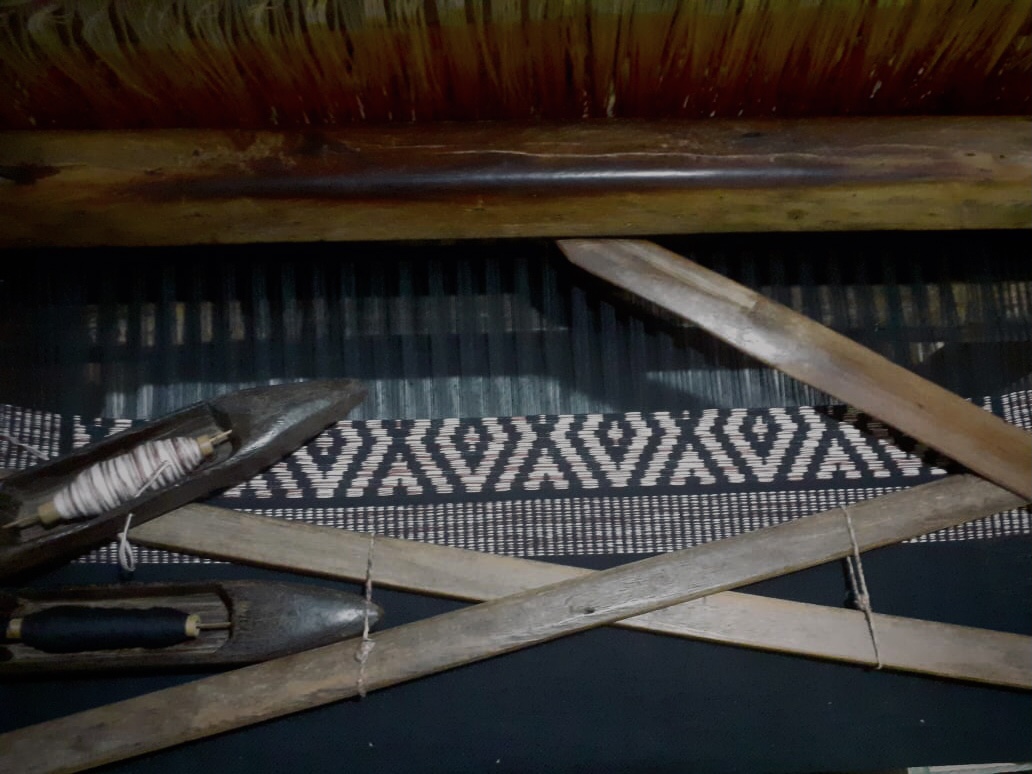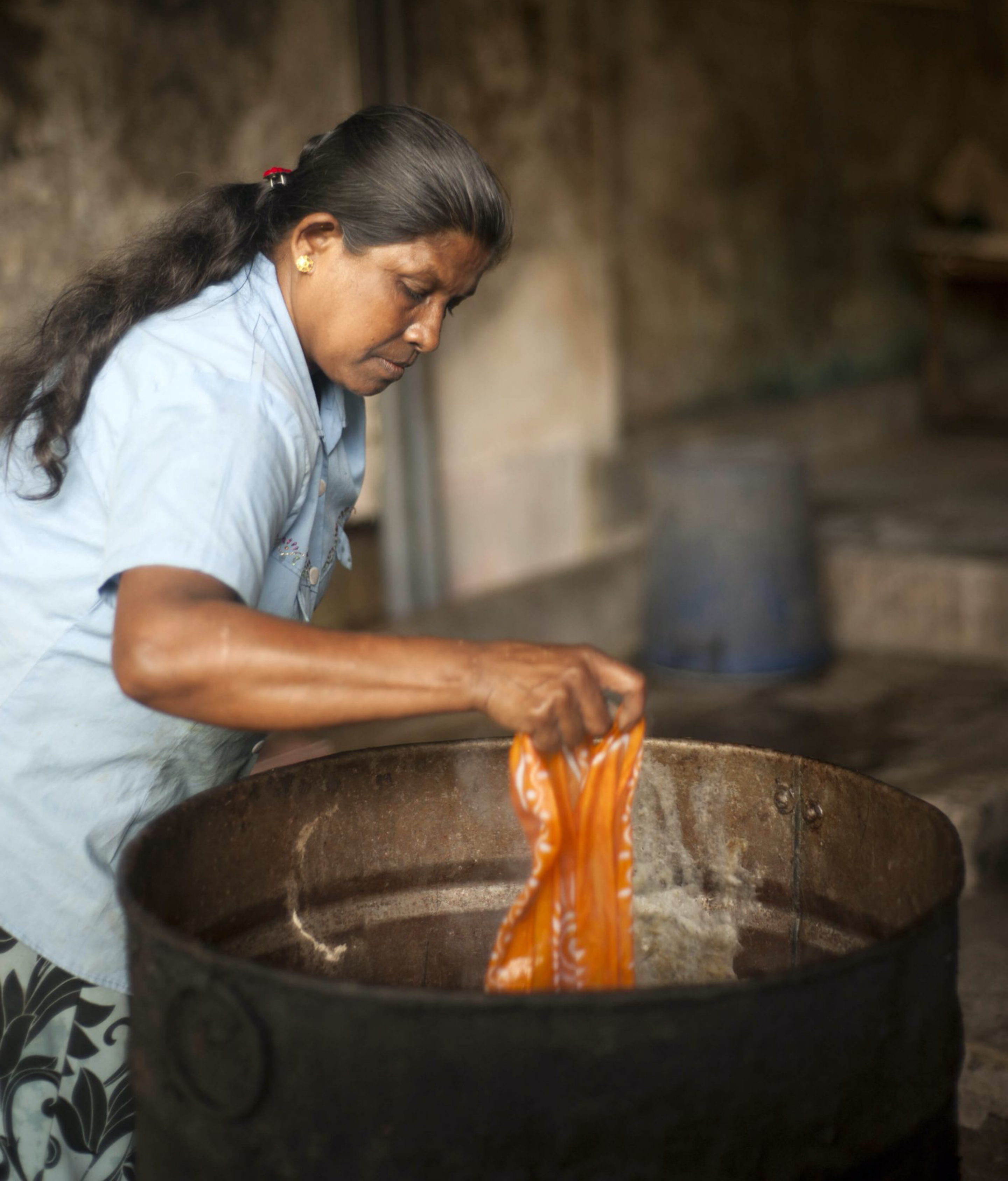Island People.Co is a sustainable, earth-conscious design studio based in Dubai, UAE We work with Sri Lankan artisans to bring you finest handcrafted textiles and goods inspired by its 3000-year-old rich culture, art & traditions.
Sri Lanka, the teardrop-shaped island country in the Indian ocean is bursting with an energy that feels like a dazzling celebration of life. We invite you to share these feel-good energies and enjoy the blessings of the natural, slow-made goods which our ancestors adopted centuries ago.

The handloom has existed since the very inception of Sri Lanka. According to legend, the indigenous Queen Kuweni was spinning yarn when the Indian Prince Vijaya first laid eyes on her.
One of the oldest crafts in Sri Lanka, the handloom is still widely utilized within the weaving community. Artisans remain faithful to original weaving methods that have been handed down through generations.
The weaver starts the production process by using environmentally friendly/natural dyes to colour either cotton or silk yarn.
The yarn is then left to dry in the shade to ensure the desired colour is preserved, limiting any potential fading.
Artisans then weave the desired design using a traditional wooden loom. Handlooms are entirely operated by hand and need the eye, hand and feet coordination. The weaver has to mentally remember the counts to make the design. This is an essential step in the production process, requiring exceptional creativity and dexterity from the native craftsmen and women.

The indigenous queen “Kuveni”, the weaver, was no ordinary princess. She was a ‘yakkini”, a sorceress. The weavers of Dumbara valley narrate an episode from the distant past when one of them captured a yakkini from the surrounding jungle and set her up at a loom to weave day in and out. She escaped, but not before setting the village, its looms, cotton trees, hemp and the nearby forest on fire. The weaver, who narrated this tale, says that the village quickly recovered. Magically, the beautiful patterns of their fabrics remained in the ashes, and so they were copied and preserved for use even today.
These stunning patterns are produced in a little isolated village in the central hills of Sri Lanka. This is the Island’s oldest and only remaining village dedicated to the hereditary craft of Dumbara Rata. Each piece of artwork is woven on the loom to perfection; a skill not many weavers are able to master.

Hundreds of years ago, traders who visited Sri Lanka first introduced the Batik craft while travelling along the Silk Road. Originally, the craft was limited to the entertainment of the elite, where aristocratic women in the Kandyan Court were skilled practitioners. The craft expanded to the artesian classes, who developed tapestries, flags and traditional clothing for the aristocracy.
Today, the Batik craft is intertwined with the island’s culture, a skill that is revered among the people. Using effortless artistry and imagination, village-based men and women create a remarkable variety of intricate designs.
Batik can only be performed using natural fibers such as cotton, linen or silk. Each pattern is meticulously drawn using a canting, a small thin wall spouted copper container that applies hot melted wax..
Once the wax has dried, the fabric is then immersed in environmentally friendly dyes and left to soak. The wax is then removed from the fabric using boiling water, revealing elaborate designs where the fabric was protected from the dye. This process is repeated 2-50 times in order to achieve the intended design patterns and colours.